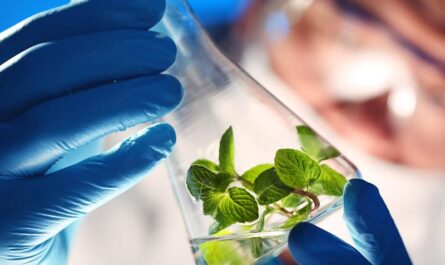Super Absorbent Polymers: Revolutionizing the Absorbency Industry
Introduction to Super Absorbent Polymers
Super absorbent polymers (SAPs), also known as absorbent gels or hydrogels, are synthetic polymers that can absorb and retain large amounts of water or biological fluids. Their extraordinary absorbency makes SAPs useful for absorbing many times their own weight in liquids. The most common SAPs are cross-linked polyacrylate salts and their derivatives. They are produced by mixing acrylic acid with other compounds during polymerization. This creates long chains with negatively charged groups that can interact with water molecules. The chains are then cross-linked to form a three-dimensional network structure with a large surface area for absorption.
Uses of SAPs in Hygiene Products
One of the largest uses of SAPs today is in disposable hygiene products like diapers, adult incontinence pads, and feminine care products. Conventional cotton-filled diapers could absorb only about 30 grams of fluid per gram of SAP. Modern SAP-containing diapers can absorb over 100 times their weight in fluids. This allows diapers to stay dry even after multiple insults of urine or feces. SAPs eliminate leaks and sagging caused by conventional cotton fibers’ inability to rapidly pull liquids away from the skin’s surface. They also help reduce diaper rashes by keeping skin dry. The extraordinary absorbency of SAPs has led to thinner, more comfortable, and less bulky diapers and pads.
Uses of SAPs in Agriculture and Horticulture
Due to their excellent water retention properties, Super Absorbent Polymers are increasingly finding applications in agriculture and horticulture. When mixed with soils, they can absorb and retain many times their weight in water and nutrients. This improves the water-holding capacity of soils, reduces leaching, and prevents drying out. As a result, crops need less frequent watering and fertilizer applications. SAPs also enhance the aeration and drainage of soils by creating channels for air and water movement. Some common applications of SAPs in agriculture include greening desert landscapes, lining greenhouses, growing container plants, and facilitating hydroponics. SAPs mixed with manure or compost also helps slow nutrient release for efficient plant feeding.
Uses of SAPs in Construction and Landscaping
Due to their water retaining properties, SAPs see extensive use in construction and landscaping applications as well. They are used to produce lightweight expanded clay aggregates for construction purposes by mixing SAPs into clay before firing. The resulting material has high strength, insulation, and water retention abilities. SAPs are added to construction backfills around buildings to absorb and retain moisture uniformly without any water clogging. They also improve drainage and prevent erosion. In landscaping, SAPs are mixed with topsoils, mulches, and growth media to reduce the frequency of watering lawns and gardens. Some even use hydrogels to preserve shallow wetlands or create artificial oases in dry areas.
Uses of SAPs in Pharmaceuticals and Biomedicine
The non-toxic and biocompatible nature of SAPs has led to exciting applications in biomedicine and pharmaceutics as well. Hydrogel wound dressings containing SAPs can absorb excess exudates from injuries while maintaining a moist environment to promote healing. They reduce dressings changes and are more comfortable for patients. SAP microspheres administering drugs orally can absorb medicines steadily over long periods in the stomach for sustained release applications like birth control pills. Some even use SAP implants in veterinary medicine for long-acting contraception or protein delivery. In contact lenses, SAPs absorb tear fluids to prevent drying of the eyes. Overall, SAPs continue to revolutionize multiple industries with their unique ability to manage fluids.
Environmental and Health Concerns with SAPs
While SAPs provide numerous benefits, some environmental and health concerns also surround their large-scale use. Since diapers and pads containing SAPs are primarily disposed in landfills, there are worries about the long-term environmental effects of non-degradable polyacrylates. Some studies show SAPs may release residual toxic monomers like acrylate when undergoing bacterial decomposition in anaerobic landfill conditions. This could potentially contaminate groundwater sources. There is also a lack of data on the impacts of long-term, low-level human or ecosystem exposure to SAPs through products or soil amendments. More research is thus warranted to develop biodegradable SAP alternatives and characterize any ecological or human health risks from current materials. Overall, responsible production and disposal practices would help maximize SAP advantages while mitigating concerns.
Future Prospects and Research on SAPs
With global population and economic growth, the demand for SAPs is expected to increase substantially over the coming decades. Researchers continue striving to develop new SAP formulations with enhanced absorption capacities, gel strengths, and element specificities. Some areas of active investigation involve grafting SAPs with natural polymers for improved biodegradability, synthesizing pH- or temperature-responsive “smart” hydrogels, and functionalizing SAPs with biological agents, drugs or proteins. Other works aim to produce SAPs from renewable feedstocks rather than petrochemicals. With further innovation and responsible management, Super Absorbent Polymers are positioned to revolutionize many traditional industries and applications. They will likely play a vital role in addressing global challenges like water scarcity through innovative new technologies.




